When Dean Kelly Chandler-Olcott learned about the special dress Rory Livingston ’24 wore to the Syracuse University School of Education Convocation on May 11, she wanted to know more about it.
Making the dress was a handful—but not in a bad way.
Livingston, an Inclusive Elementary and Special Education program graduate, sent Chandler-Olcott some photos of her in the hand-printed dress and wrote, “I knew I wanted to create something with my students to wear on graduation day. I had each student from my placements pick which color and hand they wanted to use, and also had the teachers and TAs from each class add their handprint.”
It turns out, that in addition to being a creative keepsake for a special day, the dress embodies what Livingston has learned about inclusion during her studies, as this photo essay explains …
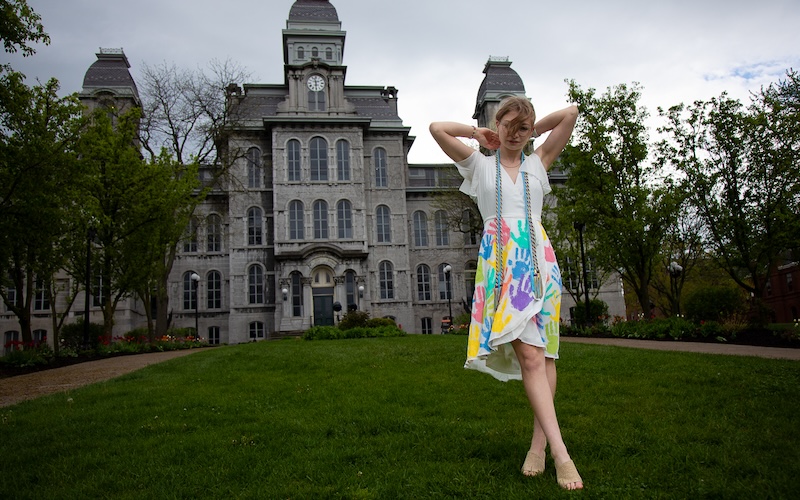
In addition to taking an Inclusive Elementary and Special Education degree, Livingston was a member of the Renée Crown University Honors Program and President of the student-led Alpha Delta Iota chapter of Kappa Delta Pi, the international honor society in education.
“Ever since I committed to Syracuse, I saw graduating students decorating their dresses and stoles,” recalls Livingston. “I had never actually seen handprints on a dress, though. I thought this idea was more inclusive of students who maybe didn’t like drawing or had mobility issues. This way, all students could contribute without disrupting the classroom too much.”
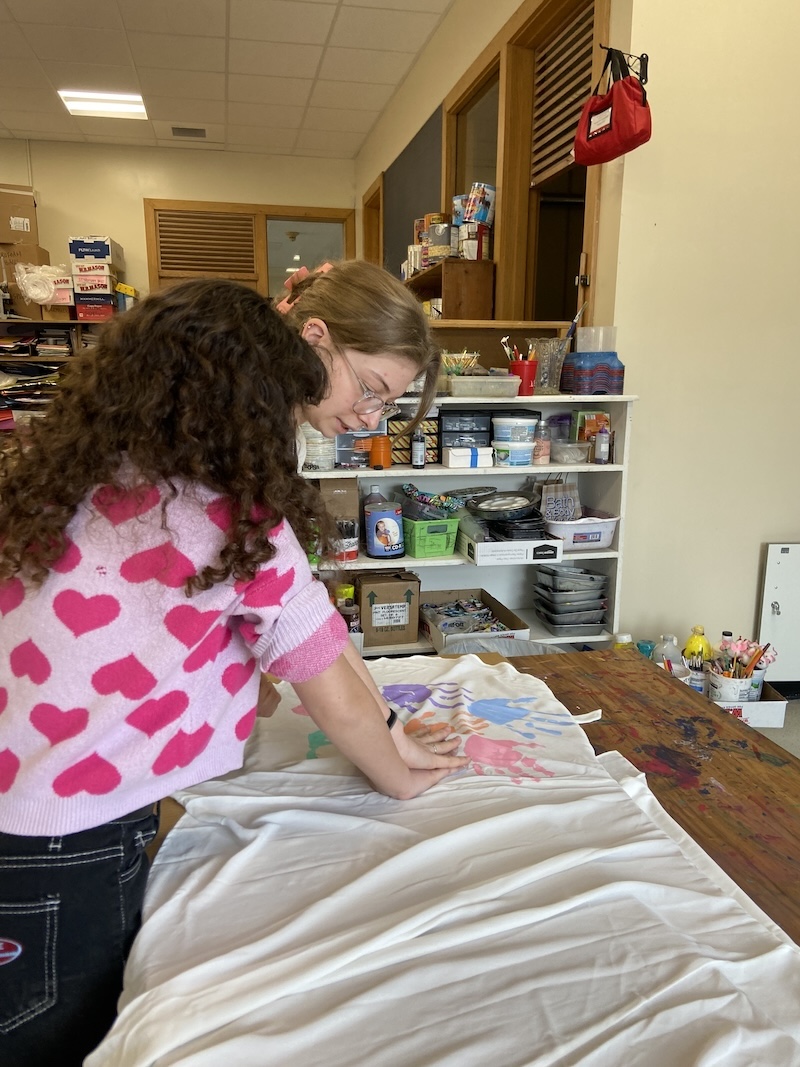
The dress has 56 colorful handprints in all. This number includes 29 fifth-grade students from the Mae E. Reynolds Elementary School in the Baldwinsville (NY) Central School District, where Livingston had her first field placement, immersed in an inclusive classroom and doing small group math work.
Hosts and mentors Therese Carlin-Erich (general education) and Jaime Young ’05 (special education), added their hands. “I enjoyed working with my fifth-graders and enjoyed my relationships with them,” says Livingston. “I think they were excited to work with me as a young person.”
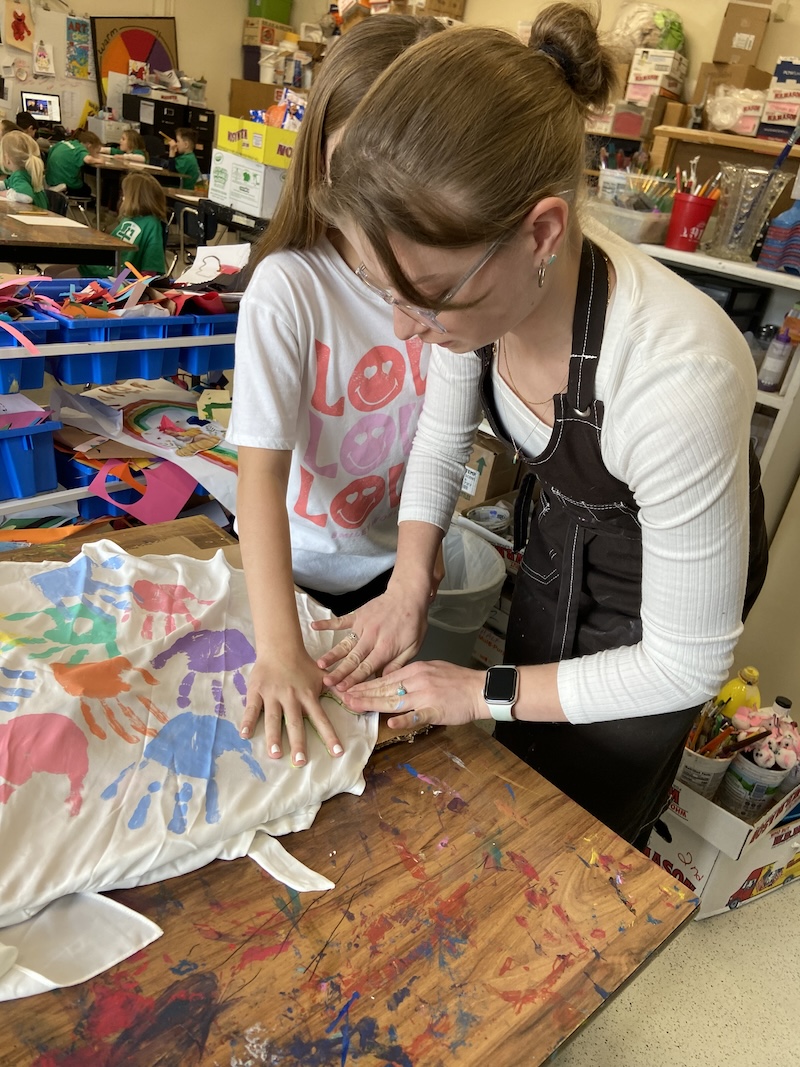
Adding their prints were 18 students from Livingston’s second student teacher placement in the third grade at Smith Road Elementary School in the North Syracuse Central School District, as well as general education teacher Lauren Corbishley-Stuper and special education co-teacher Gia Pilger.
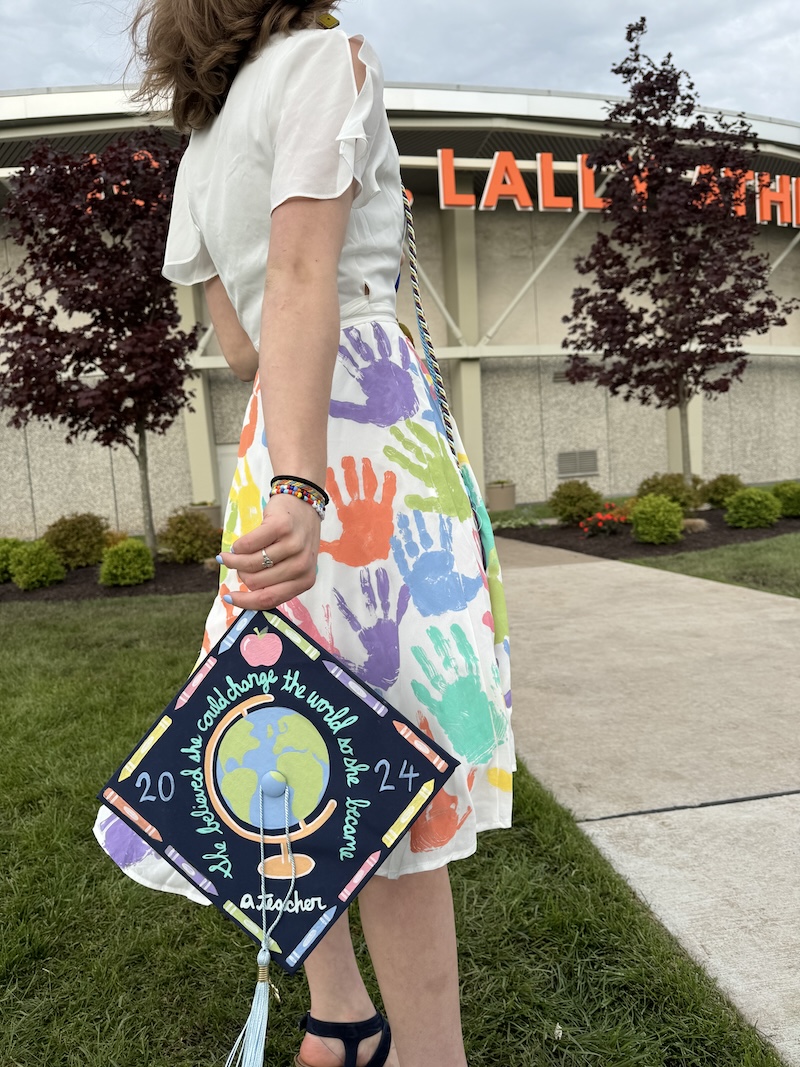
After graduation, Norwich, VT, native Livingston will move to Connecticut. “I’m interested in mathematics education. I want to teach first, but then think about a master’s degree.”
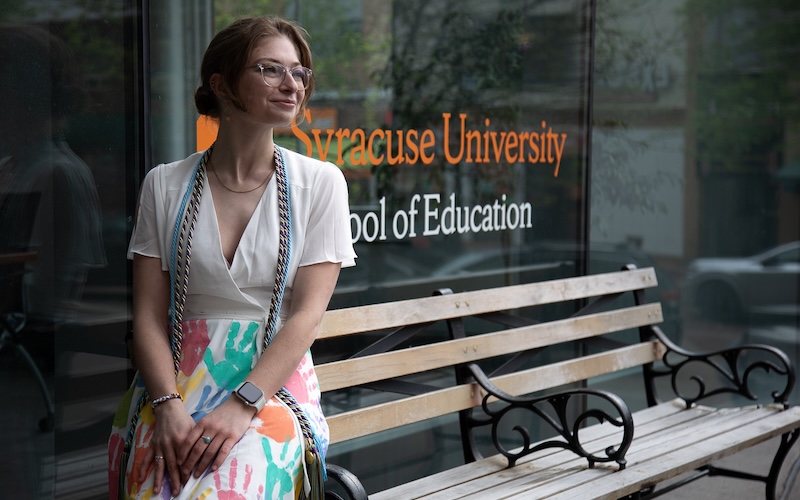
Livingston has this advice for other student teachers embarking on their field placements: “Remember you are still learning. It’s OK if you mess up. Don’t try to be the perfect teacher. Being honest with my students was super valuable. I would tell them, if what I’m saying doesn’t make sense, let me know and we’ll find another way. Being vulnerable opens you up, and it helps open up your students.”
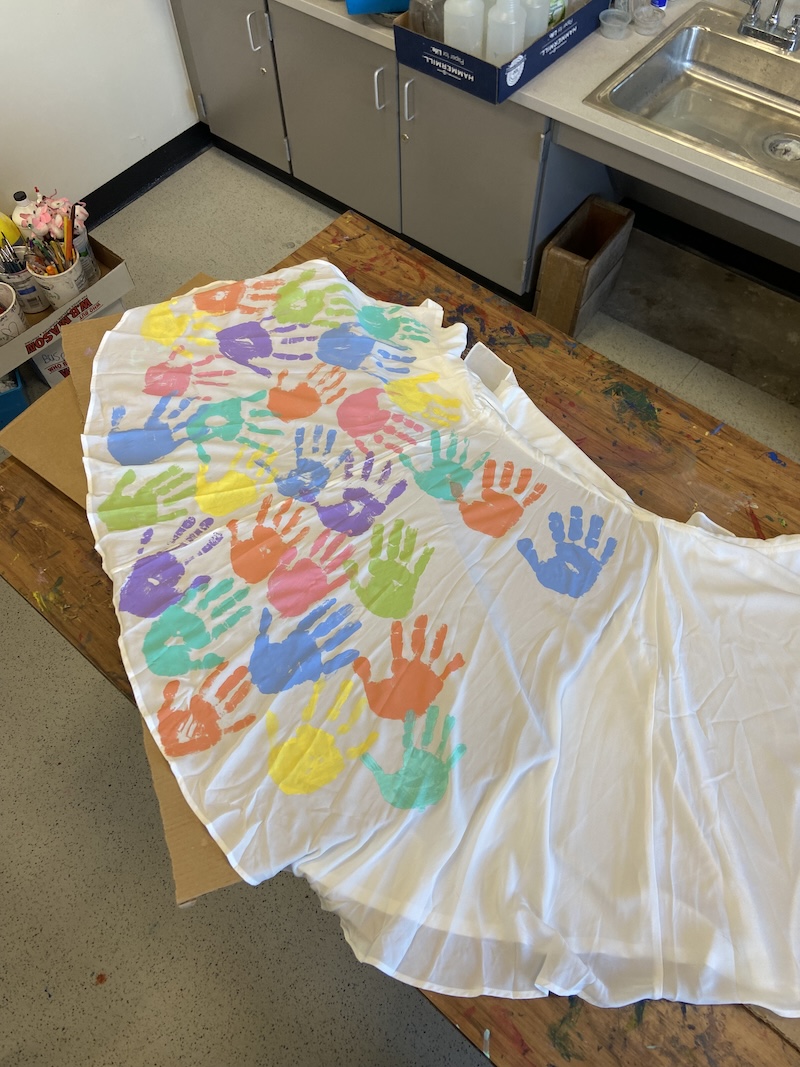
“I’m debating what to do with the dress” explains Livingston. “I might frame it. I have kept all the cards students in my placement classes have given me in a collage, and it might be fun to add the dress.”
Learn more about the bachelor’s degree program on inclusion program), or contact Heather Macknik at hmmackni@syr.edu.
